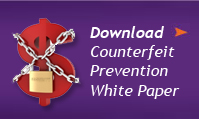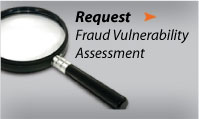
FACTA-Red Flag Rules
The Fair and Accurate Credit Transactions Act
Comply with Anti-Money-Laundering Regulations; Cut Down on Fraud Losses;  Avoid Hefty Fines
Avoid Hefty Fines
Growing to $221 Billion in losses and rising each year, identity fraud stems from thieves that use people’s personally identifying information to open new accounts and misuse existing accounts.
The “Red Flag” Rule, in effect since January 1, 2008, requires many businesses and organizations to implement a written Identity Theft Prevention Program designed to identify and detect warning signs – or “red flags” – of identity theft in their day-to-day operations, take steps to prevent the crime, and mitigate the damage it inflicts by taking corrective action. By identifying red flags in advance, they will be better equipped to spot suspicious patterns when they arise and take steps to prevent a red flag from escalating into a costly episode of identity theft. The FTC began enforcement of the Red Flag Rule on May 1, 2009.
How to Prevent Identity Theft
Organizations have generally found that preventing identity theft requires a layered approach involving variable levels of scrutiny at different points of vulnerability within an operation. For example, at transaction points where the nature and size of transactions are relatively limited, it may only be necessary to take steps to “validate” identity documents by checking for covert UV features. However, at those points where larger transactions are likely to occur, it may be necessary to install a more complete “authentication” system capable of scanning ID documents and forensically examining them in detail. In each case, Fraud Fighter™ has the solutions you need.
Comply with Red Flag Rules & Prevent ID Theft
The Red Flags Rule seeks to prevent identity theft by ensuring that businesses or organizations are proactively on the lookout for the signs that identity thieves are using people’s personally identifying information, typically to open new accounts or misuse existing accounts, to get products or services from you with no intention of paying. You can fight the battle against identity theft on two fronts: First, by implementing data security practices that make it harder for crooks to get access to the personal information they use to open or access accounts, and second, by paying attention to the practices and activity patterns ‘red flags’ that suggest that fraud may be afoot.
Who must comply with the Red Flags Rules?
The Red Flags Rule applies to “financial institutions” and “creditors.” In addition, it requires such organizations to conduct a periodic risk assessment to determine whether they have “covered accounts.” In short, you need to implement a written program if you have covered accounts.
It’s important to look closely at how the Rule defines “financial institution” and “creditor” because the terms apply to groups that might not typically use those words to describe themselves. For example, many non-profit groups and government agencies are considered “creditors” under the Rule. The determination of whether your business or organization is covered by the Red Flags Rule isn’t based on your industry or sector, but rather on whether your activities fall within the relevant definitions.










